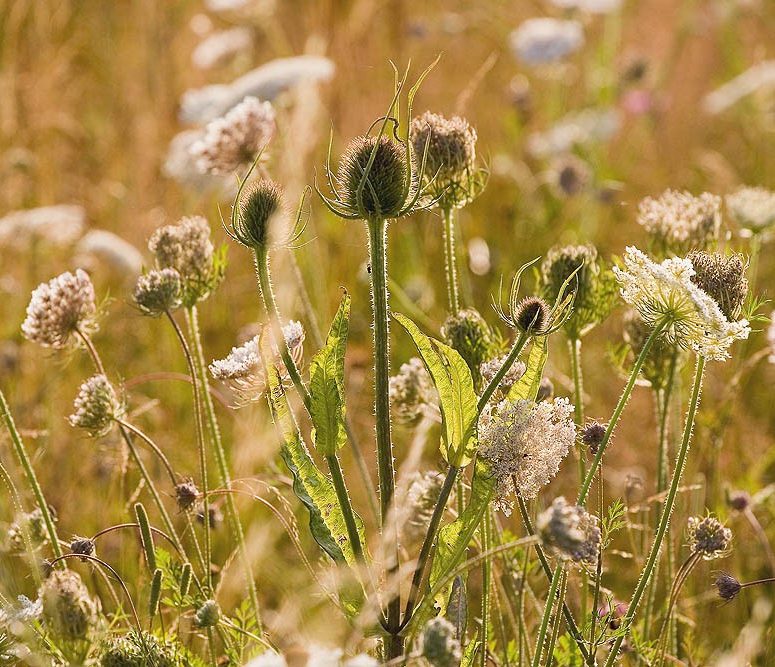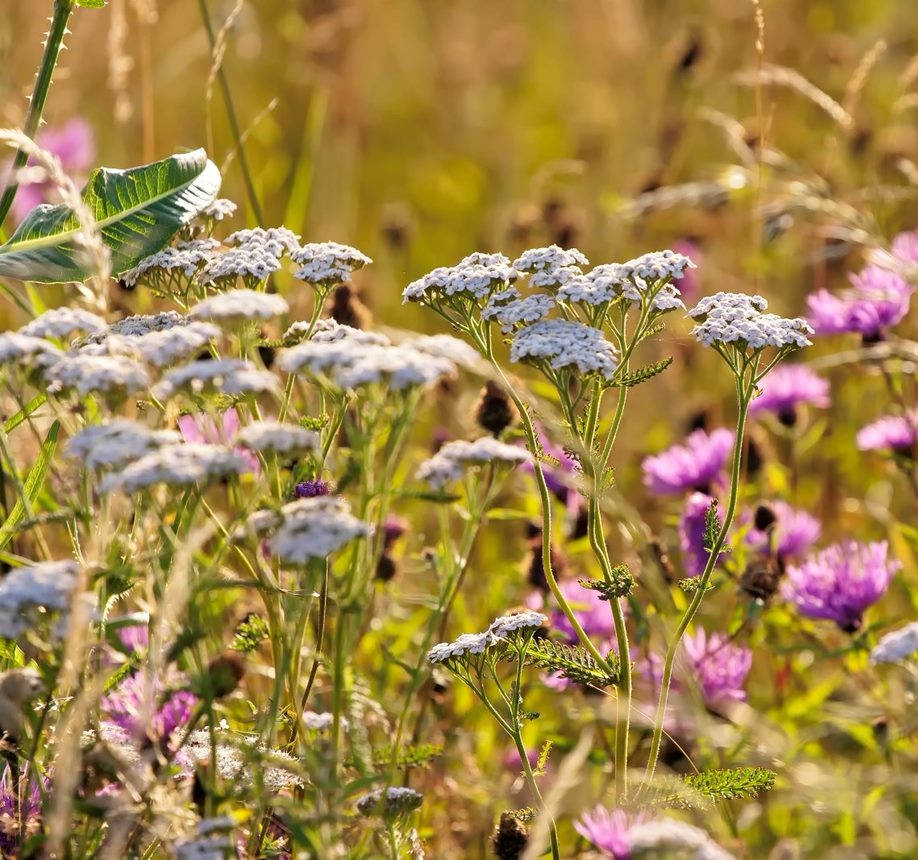Suggested Sowing Rates
40kg/ha 16kg/acre 4g/m2
Sowing rates can be reduced to 20kg/ha (8kg/acre) for large scale projects and environmental stewardship options.
Description
The varied forms of the grasses in EM10 provide the main focus of interest of this mixture. The tussock forming grasses are combined with wild flowers like knapweeds and vetches which can cope with competition from taller vegetation. This mixture has been devised to create areas of tussocky grassland that, once established, require little or no maintenance. This grassland type can form a good habitat for insects, small mammals, birds, amphibians and reptiles, providing nesting sites during spring, food during summer and autumn, and shelter during winter.
Ground Preparation
Endeavour to select ground that is not highly fertile and does not have a problem with perennial weeds. Good preparation is essential to success so aim to control weeds and produce a good quality seed bed before sowing.
To prepare a seed bed first remove weeds using repeated cultivation. Then plough or dig to bury the surface vegetation, harrow or rake to produce a medium tilth, and roll, or tread, to produce a firm surface.
Sowing
Seed is best sown in the autumn or spring but can be sown at other times of the year if there is sufficient warmth and moisture. The seed must be surface sown and can be applied by machine or broadcast by hand. To get an even distribution and avoid running out divide the seed into two or more parts and sow in overlapping sections. Do not incorporate or cover the seed, but firm in with a roll, or by treading, to give good soil/seed contact.
First Year Management
Most of the sown meadow species are perennial and are slow to establish. Soon after sowing there will be a flush of annual weeds, arising from the soil seed bank. These weeds can look unsightly, but they will offer shelter to the sown seedlings, are great for bugs, and they will die before the year is out. So resist cutting the annual weeds until mid to late summer, especially if the mixture contains Yellow Rattle, or has been sown with a nurse of cornfield annuals. Then cut, remove and compost. Early August is a good time. This will reveal the young meadow, which can then be kept short by grazing or mowing through to the end of March of the following year. Carefully dig out any residual perennial weeds such as docks.
Management Once Established
Once established tussocky grassland requires minimal maintenance. Unwanted perennial weeds (docks, thistles) may need control by selective scything before seeding. To control scrub and bramble development, tussocky areas may need cutting every 2-3 years between October and February. For wildlife this cutting is best done on a rotational basis so that no more than half the area is cut in any one year leaving part as an undisturbed refuge.



